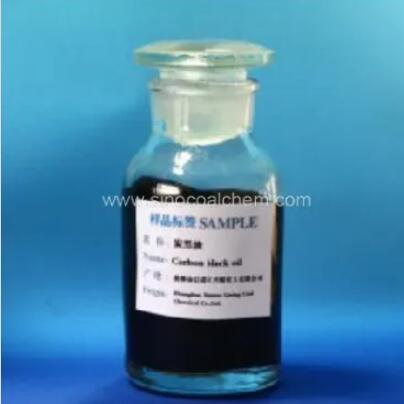Carbon black oil is a complex mixture of hydrocarbons and other chemical compounds that is produced as a byproduct of the incomplete combustion of heavy petroleum products, such as coal tar, crude oil, or ethylene cracking tar. It is a valuable resource that has a range of uses in various industries, particularly as a feedstock for the production of carbon black, which is an essential ingredient in the manufacturing of tires, rubber products, and other materials that require high durability and abrasion resistance.
Properties of Carbon Black Oil:
Carbon black oil has a high carbon content, typically ranging from 50% to 85%, which makes it a valuable source of carbon black. The physical properties of carbon black oil can vary widely depending on the composition and source. For example, the viscosity of carbon black oil can range from a thin liquid to a thick, tar-like substance, depending on the degree of refining.
In addition to carbon, carbon black oil also contains significant amounts of polycyclic aromatic hydrocarbons (PAHs), which are toxic and potentially carcinogenic compounds that require careful handling and disposal. The exact composition of carbon black oil can vary depending on the source and production process. For example, carbon black oil from crude oil typically has a higher sulfur content than that from coal tar.
Uses of Carbon Black Oil:
The primary use of carbon black oil is as a feedstock for the production of carbon black, which is an essential ingredient in the manufacturing of tires, rubber products, and other materials that require high durability and abrasion resistance. Carbon black is a fine black powder that is produced by pyrolyzing carbon black oil in a furnace at high temperatures.
Carbon black is a versatile material that is used in a wide range of applications. In addition to tires and rubber products, it is also used in the production of plastics, paints, and other materials that require a deep black color. Carbon black can improve the mechanical properties of materials, such as stiffness, strength, and abrasion resistance.
Carbon black oil can also be used as a fuel in industrial boilers, furnaces, and other applications that require a high energy content and low emissions. However, the use of carbon black oil as a fuel is limited due to its high sulfur content, which can lead to the formation of sulfur dioxide and other harmful emissions.
Carbon black oil is sometimes used in the production of ink, paint, and other pigments that require a deep black color. The use of carbon black oil in pigment production is limited due to its relatively high cost compared to other pigments, such as carbon black powder or lamp black.
In some specialty applications, such as the production of activated carbon or high-purity graphite, carbon black oil is used as a feedstock. Activated carbon is a highly porous material that is used for adsorption and filtration in a wide range of applications, including water treatment, air purification, and food processing. High-purity graphite is used in electronic components, such as batteries, and in the production of nuclear reactors.

Environmental and Health Concerns:
Carbon black oil contains significant amounts of polycyclic aromatic hydrocarbons (PAHs), which are toxic and potentially carcinogenic compounds that require careful handling and disposal to minimize environmental and health risks. PAHs can be released into the environment during the production and use of carbon black oil and carbon black.
The use of carbon black oil as a fuel can also lead to the formation of harmful emissions, such as sulfur dioxide, nitrogen oxides, and particulate matter. These emissions can contribute to air pollution and have negative impacts on human health and the environment.
To minimize environmental and health risks, carbon black oil and carbon black should be handled and disposed of in accordance with local regulations and best practices. This may include the use of specialized equipment and procedures, such as closedsystems and protective gear, to prevent exposure to harmful substances.
Conclusion:
Carbon black oil is a valuable resource that has a range of uses in various industries, particularly as a feedstock for the production of carbon black. However, it also poses environmental and health risks due to its high content of toxic and potentially carcinogenic compounds, such as polycyclic aromatic hydrocarbons. To minimize these risks, it is important to handle and dispose of carbon black oil and carbon black in a responsible manner and in accordance with local regulations and best practices.
Copyright:@2020-2021
Comments Please sign in or sign up to post.
0
0 of 500 characters used